Daedalic Entertainment At E3
by Edward
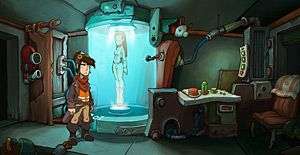 As a point and click aficionado, my love for Daedalic is one that grows ever fonder with every new title they reveal. From the hilarious Edna & Harvey series to the outstanding Deponia series, the company’s track record is one that others should be envious of, so when I was given the opportunity to check out what they have in store for the coming year, I damn near ran to their E3 meeting hall just so I could be the first in line to see what lies in store for the newly-revitalised point and click genre.
As a point and click aficionado, my love for Daedalic is one that grows ever fonder with every new title they reveal. From the hilarious Edna & Harvey series to the outstanding Deponia series, the company’s track record is one that others should be envious of, so when I was given the opportunity to check out what they have in store for the coming year, I damn near ran to their E3 meeting hall just so I could be the first in line to see what lies in store for the newly-revitalised point and click genre.
Goodbye Deponia – PC, Mac. October 2013.
The Deponia series is one that’s more than critically revered by the Gaminglives team – both titles garnered a nine out of ten and the former earned an Editor’s Choice award from the wonderful Lorna – and, as such, the conclusion of the trilogy was one of the titles I was most looking forward to seeing at E3. Combining an incorrigible anti-hero with madcap adventures that see him attempting to make it to the mythical Elysium and prevent the trash planet he currently inhabits from being blown up, Daedalic have one of the smartest, funniest and downright amazing series adventure games have ever seen.
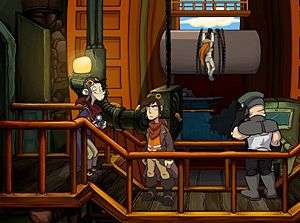 They say the third time’s the charm, but others say bad luck comes in threes. In Goodbye Deponia’s case it’s looking to be both at once, as in Rufus’ attempts to prevent the evil Organon from destroying the titular trash planet, he realises that he can’t do it alone, and thus resolves to clone himself twice, giving players and foes alike a triple-threat of terror. While each version of Rufus will have their own tasks to accomplish – and can be swapped between on the fly – the presence of three at once means that the puzzle dynamic will be quite different to previous entries in the series; rather than changing Goal’s personality in order to progress, instead each of our heroes has to help – or rather, hinder – the others so that they can get ahead.
They say the third time’s the charm, but others say bad luck comes in threes. In Goodbye Deponia’s case it’s looking to be both at once, as in Rufus’ attempts to prevent the evil Organon from destroying the titular trash planet, he realises that he can’t do it alone, and thus resolves to clone himself twice, giving players and foes alike a triple-threat of terror. While each version of Rufus will have their own tasks to accomplish – and can be swapped between on the fly – the presence of three at once means that the puzzle dynamic will be quite different to previous entries in the series; rather than changing Goal’s personality in order to progress, instead each of our heroes has to help – or rather, hinder – the others so that they can get ahead.
During the demo, one Rufus inadvertently delivered an item to another who sorely needed it, while later on one of our heroes’ attempts to turn the lights on exposed the location of another trying to sneak past the Organon guard. With that being just one example of the interplay between each protagonist, I can’t wait to see how else they interact with each other throughout the story and how the puzzles are affected as a result, because the demo alone showcased some absolutely ingenious moments that bode well for the rest of the adventure.
I didn’t fall in love with the Deponia series just because of its irredeemable protagonist and the stellar puzzles, but because of the hilarious writing and the emergent love story between Rufus and Goal, the fallen girl of Elysium. One of my favourite parts of last year’s instalment was how the relationship between our hero and heroine seemed more like an examination of their own flaws and what they’d have to overcome in order to be together. This time around, it looks like Rufus is going to have to learn how to be a grown-up, as in his attempts to save Deponia he accidentally loses his beloved, and his attempt to bring her back through the medium of cloning backfires when he lacks enough DNA to do so properly, the machine instead spitting out an infant version of her. As a result, the intrepid dumpster-diver is now the protective warden of Goalie – Baby Goal was taken in Chaos on Deponia by one of her split personalities – and though I didn’t get to see the extent to which you’ll have to balance it on top of your Rufus-swapping, one of the puzzles I saw involved him trying to light a fire in order to see where he’s landed and keep Goalie quiet in the process, as she starts crying whenever he attempts to conjure light. While I won’t spoil what happens, it’s clear that between Rufus and the newly-infantile Goal, it’s the former who is the greater hindrance to our heroes’ best-laid plans.
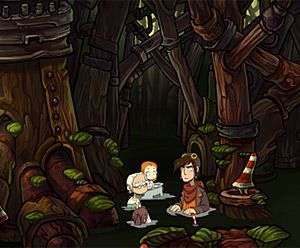 It’s not all change for this final instalment though, as the beautiful frame by frame animations are still alive, kicking and just as funny as ever, there’s still a host of hilarious and quirky characters – bearded coffee-addicted baby included – and the familiar between-chapter songs from creator Poki, though I was told he wouldn’t have an in-game cameo like his turn as a terrible gondola singer in the last game. With my only real criticism towards the last two titles being that some of the puzzles were a bit obtuse, it looks like this instalment is ticking every box needed to build on the quality and success of its predecessors, and I can’t wait to get my hands on it when it finally arrives in October. From my brief glance at what’s in store, it’s looking more and more likely that Goodbye Deponia will be the pinnacle of the series, and one of the finest titles the genre has to offer.
It’s not all change for this final instalment though, as the beautiful frame by frame animations are still alive, kicking and just as funny as ever, there’s still a host of hilarious and quirky characters – bearded coffee-addicted baby included – and the familiar between-chapter songs from creator Poki, though I was told he wouldn’t have an in-game cameo like his turn as a terrible gondola singer in the last game. With my only real criticism towards the last two titles being that some of the puzzles were a bit obtuse, it looks like this instalment is ticking every box needed to build on the quality and success of its predecessors, and I can’t wait to get my hands on it when it finally arrives in October. From my brief glance at what’s in store, it’s looking more and more likely that Goodbye Deponia will be the pinnacle of the series, and one of the finest titles the genre has to offer.
Blackguards – PC. November.
For a company known for their colourful and hilarious point-and-click adventure games, a dark, brooding turn-based RPG probably isn’t the first thing you’d think of when you picture Daedalic Entertainment. Nonetheless, later this year will see their first major foray into a different genre with the terrific Blackguards, one of two titles the company are planning to release based on the popular German pen and paper franchise known as The Dark Eye.
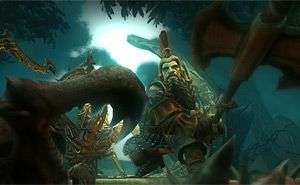 The story of Blackguards begins when your character – who can be customised with a variety of stock appearances and a choice between several class types – attacks a wolf who has just killed a fair maiden, but when passers-by come across the scene the recently-deceased animal is nowhere to be found, and so you’re arrested for murder. Security in the prison is what some would call inadequate shortly before being trampled by escaping ne’er-do-wells, and before long you’ve broken out of your shackles and have been able to release your fellow prisoners in the name of freedom.
The story of Blackguards begins when your character – who can be customised with a variety of stock appearances and a choice between several class types – attacks a wolf who has just killed a fair maiden, but when passers-by come across the scene the recently-deceased animal is nowhere to be found, and so you’re arrested for murder. Security in the prison is what some would call inadequate shortly before being trampled by escaping ne’er-do-wells, and before long you’ve broken out of your shackles and have been able to release your fellow prisoners in the name of freedom.
Anyone familiar with recent critical darlings XCOM and Fire Emblem will be well at home here as the combat isn’t wholly dissimilar, with visible tiles on the floor showing where players can move and attack, further tiles sacrificing the latter option in the name of a sprint, way-points to dictate in what manner they travel towards their target and the success of hits displayed in a handy percentage before you let loose. However, Blackguards is more than a pale imitation, and contains plenty of evolutions on the recently-popular formula. One such example includes interactive objects within the environment, which in the demo ranged from the ability to trigger levers to open prisoner doors and a precariously-dangling chandelier that was shortly dropped on some unsuspecting guards.
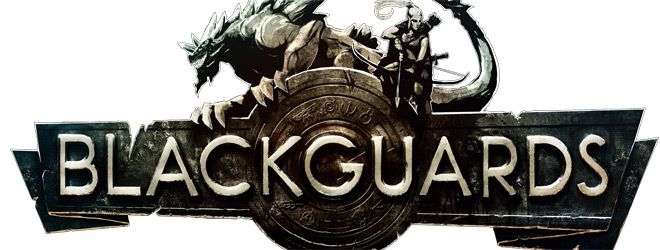
Using these is only one of many options afforded to the player, as there are several battles where turning tail and running is just as viable a tactic as staying and fighting. With this in mind, a spell was shot towards the nearby guards, creating a temporary wall of fire that allowed our protagonist and his motley crew of criminals to make their escape to the next area. To this end, gaining experience isn’t necessarily tied to dispatching of all of your foes, but instead earned by simply finishing the mission via any possible means, so multiple play-styles are accommodated, though I was informed that an entirely-pacifistic or non-lethal run isn’t possible.
Equally impossible is coming out of the story smelling of roses; you can’t decide if you’re good at the end, but you can decide how bad you are. Throughout the story there’ll be a litany of moral choices and dialogues that will affect the outcome of the ending, and your actions will affect your sanity as well, to the point you may stop believing that murderous wolf was ever even there.
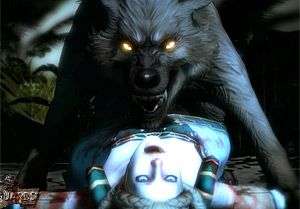 Blackguards represents a rather intriguing shift from the usual fare at Daedalic; they’ve flirted with more serious titles before with A New Beginning and Chains of Satinav – also part of The Dark Eye’s universe – but their adventure flair has been replaced with a dark and brooding take on the turn-based RPG. Anyone who’s been following the company’s success these last few years may see this as a bold new direction, but it already looks like it’s one that’s right at home. With constantly rewarding combat and a story that will keep you guessing until the end, Blackguards is guaranteed to turn more than a few heads and win the hearts of many more, just before it drops a chandelier on their heads.
Blackguards represents a rather intriguing shift from the usual fare at Daedalic; they’ve flirted with more serious titles before with A New Beginning and Chains of Satinav – also part of The Dark Eye’s universe – but their adventure flair has been replaced with a dark and brooding take on the turn-based RPG. Anyone who’s been following the company’s success these last few years may see this as a bold new direction, but it already looks like it’s one that’s right at home. With constantly rewarding combat and a story that will keep you guessing until the end, Blackguards is guaranteed to turn more than a few heads and win the hearts of many more, just before it drops a chandelier on their heads.
Memoria – PC, Mac. Co-Published by Deep Silver. Q3 2013
Blackguards wasn’t Daedalic’s only foray into the world of The Dark Eye present at E3, with the gorgeous-looking Memoria also present to provide pointing and clicking heaven. Demonstrated by lead designer Kevin Mentz, this title loosely follows on from Chains of Satinav, as while the story isn’t interlinked some of the characters from the aforementioned series will appear at various points throughout. It also promises to be a more ambitious affair, as it attempts to tell two stories side by side; the first is that of bird-catcher Geron, as he endeavours to find out what happened to a princess five-hundred years ago who ventured into a battle against demons in her quest to become the greatest hero of all time, only to never be seen or heard from again. The second tale is that of the princess herself, and players will play both sides in order to find out what really happened, with Geron’s side taking more of a detective slant as he aims to uncover the truth, and the ending intersecting both paths in a very unique way.
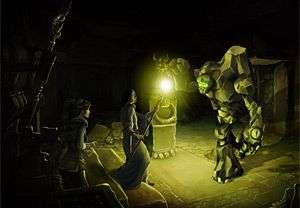 Showing off an early part of Princess Sadja’s story, the preview began after she had entered a mysterious tomb with a group of adventurers, all of whom subsequently died. Sadja isn’t alone though, as she soon collects a mysterious talking staff that bestows her with the ability to cast spells. With its introduction, Kevin joked that “he’s quite a charming staff, but he could be the most evil person in the world for all we know, he could be the big villain in the game or just some inconsequential guy“. For now, his identity isn’t what’s important, but the magic, as Sadja needs to make use of his activation and deactivation spell to proceed past a door that stands between her and freedom.
Showing off an early part of Princess Sadja’s story, the preview began after she had entered a mysterious tomb with a group of adventurers, all of whom subsequently died. Sadja isn’t alone though, as she soon collects a mysterious talking staff that bestows her with the ability to cast spells. With its introduction, Kevin joked that “he’s quite a charming staff, but he could be the most evil person in the world for all we know, he could be the big villain in the game or just some inconsequential guy“. For now, his identity isn’t what’s important, but the magic, as Sadja needs to make use of his activation and deactivation spell to proceed past a door that stands between her and freedom.
What follows is a brilliantly creative sequence of events that involves the co-operation of the partially-destroyed golems scattered amongst the ruins in the area next door, and the methods needed to succeed are so cunning that I daren’t spoil them for anyone who plays. Memoria will be full of inventive puzzle threads, as each of the eight chapters will focus on something different in order to keep things feeling fresh; some may be more about combining and using items in your inventory, while others will involve an emphasis on dialogue or magic instead.
As we played through the demo, I was able to rattle off a few questions in Kevin Mentz’s direction about Memoria, the difficulty in writing and designing puzzles and how Daedalic titles never fail to have beautiful backgrounds.
You’ve got two very different tones, and you’ve had to try and combine them in a way that makes sense without them contrasting too much.
Yeah, I really wanted to make sure there was maximum contrast. Geron’s story, he only lives in a small, rather boring village with a forest around and there are just boring people there, and he’s just trying to figure everything out, it’s very personal and it’s very small. Meanwhile, the princess’ story is huge and monumental with a lot of magic, and it switches between those all the time.
The backgrounds are amazing, [Daedalic games] always have these beautiful backgrounds that I end up compulsively print-screening.
Thanks! It’s always a huge advantage and a massive effort to do the painting style in 2D. If you do it in 2D there’s always a certain charm coming with it, but it’s a lot of effort. You’re not as flexible as you are with 3D, but we just like it that way.
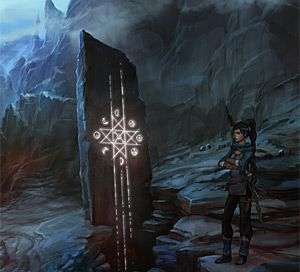 With those golems there’s some really inventive puzzle design, how do you manage to sit there and think of all these puzzles?
With those golems there’s some really inventive puzzle design, how do you manage to sit there and think of all these puzzles?
That puzzle I sat there for a month and had no idea what I wanted, then suddenly I just had the idea for the golems, and then ten minutes afterwards I had the walk-through done for the entire puzzle. I was so happy with that.
How long has it taken you to design the whole thing?
To get the walk-through done for the entire game, I can’t really say; there’s weeks where you have no good ideas and then suddenly everything pops into place. The story, I designed the whole thing as one big puzzle, the story is in itself a puzzle and there’s one at the beginning that doesn’t get resolved until the end. The story took me three months to get done, and the puzzle design was another two months.
How do you manage to intersect the puzzles and the story in a way that makes sense, rather than stopping the pace dead?
You have to think about both all the time, so I always try and think of situations where there are cool puzzles, but sometimes we come up with a plot point and something specific has to happen and you have no idea how you’re going to turn it into a puzzle. Those are the hardest parts.
You said the environments take a while to make, are there ever points where you have to make the puzzle threads a bit smaller because it’d take too long to make another room?
Definitely, you always have to think about everything all of the time. You have to think about how many backgrounds you can make, how many characters you have, because with the voice acting you can only have so many characters with voices.
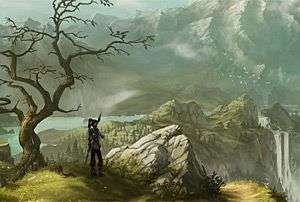 As Memoria is based on a Pen and Paper series, do you get free rein to do whatever you want with the story or do they ever restrict you?
As Memoria is based on a Pen and Paper series, do you get free rein to do whatever you want with the story or do they ever restrict you?
The trick I did with this game is that fifty percent of it takes place five-hundred years in the past, and there are no books about that, so I could do whatever I wanted. Even the spells I could make up because they all got lost in the last five-hundred years!
So basically you’ve created the past canon for the entire series!
Yeah, that was actually pretty scary!
Do you ever find yourself coming up with spells that you then have to cut because there aren’t enough puzzles to justify them?
Yeah, if there was a spell that could only really be used on one puzzle, we had one really cool spell that we had to cut and, I wish I could tell you about the rest of the spells too but I don’t want to spoil anything!
I know Memoria is more serious than other Daedalic titles, but it’s good to see how you’ve used the staff to sneak in a couple of light-hearted lines.
Well it’s my opinion that if you’re very creative or a humorous person then you have a good sense for timing, and you have a good sense for invention, because humour works best when you’re clever and surprising with it. Writing for point and clicks you have to write so much text; I helped Poki with the first Deponia game, I wrote all the interaction text and I almost died! There was just so much text there!
Is the script for Memoria particularly big in comparison?
I never printed it out, but I think it has a bit more text than Night of the Rabbit.
Releasing later this year, Memoria promises to be an incredibly intelligent and beautiful story that will help prove that Daedalic don’t need to be funny to deliver amazing adventure games.
Last five articles by Edward
- Best of 2015: Journey's End: A New Beginning
- Journey's End: A New Beginning
- You Can't Choose Your Happy Ending
- Okay, Let's Fix Comedy In Games - The V-Effekt
- Time Keeps On Smashing Away














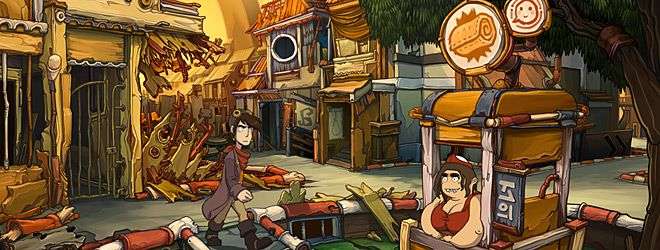
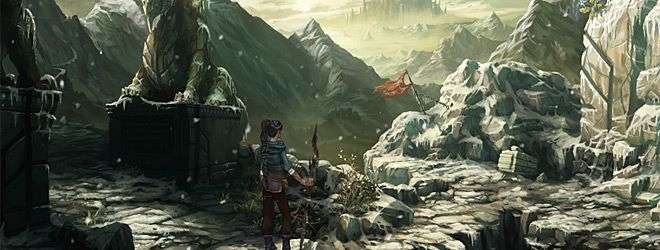





There are no comments, yet.
Why don’t you be the first? Come on, you know you want to!